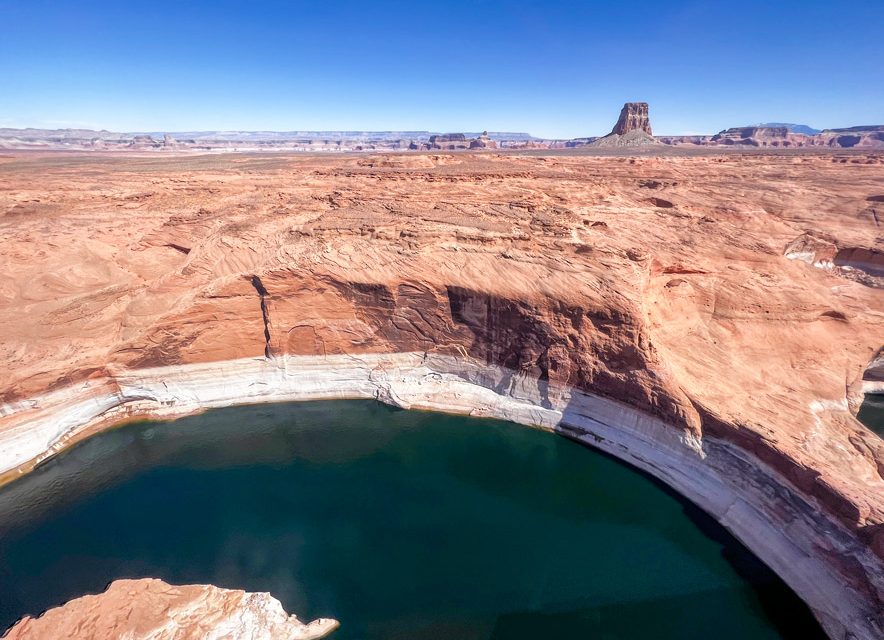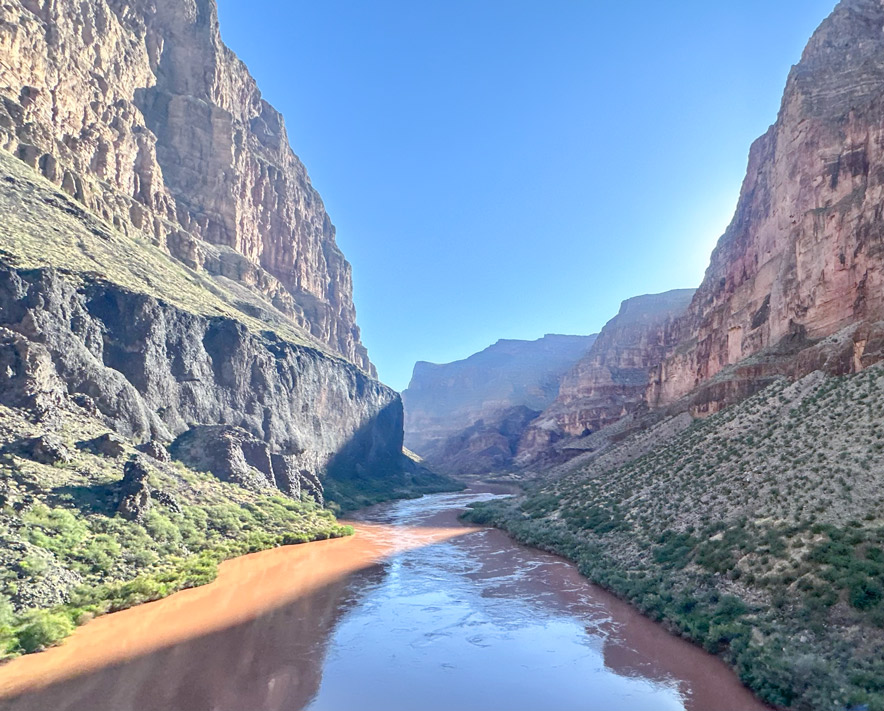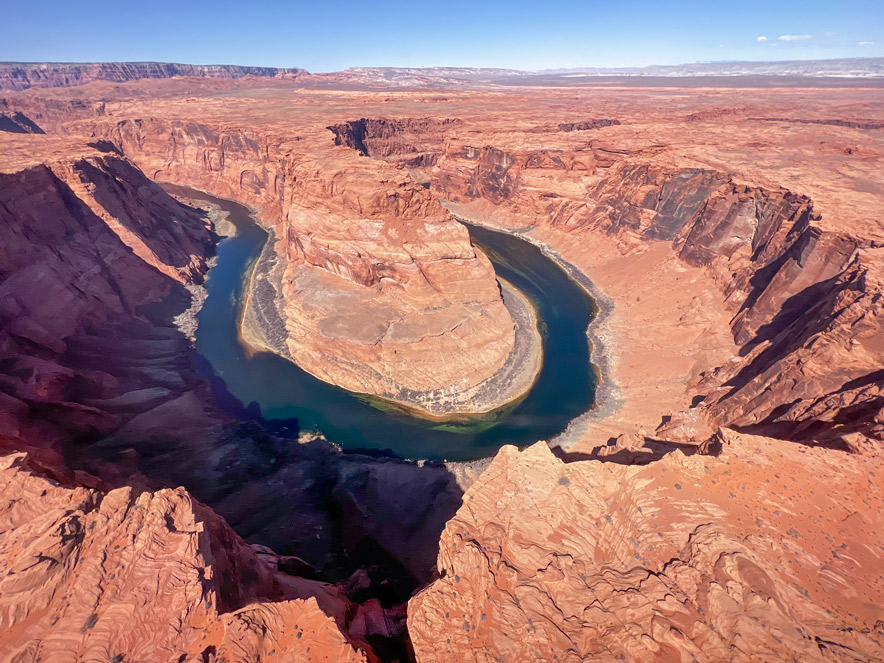
Tribe settles historic water rights for Navajo Nation, people

Navajo Times | Krista Allen
Water runs through Navajo Canyon near Tower Butte (on Diné Bikéyah) on a Friday afternoon near Page, Ariz.
By Donovan Quintero
Special to the Times
WINDOW ROCK
The Navajo Nation’s Arizona water rights have come closer to being settled.
The approval and signing of the Northeastern Arizona Indian Water Rights Settlement Agreement secures the tribe’s water rights and allows the Navajo Nation to move water around the Nation to where it’s needed.

Navajo Times | Krista Allen
The Colorado River on Lake Powell runs through a channel at the Glen Canyon Dam on a Friday afternoon near the Arizona/Utah border.
Federal laws currently prevent the tribe from moving water to areas on the reservation with unreliable groundwater. If Congress enacts the settlement and President Joe Biden signs it, it will enable the federal government to address those laws and allow the Navajo Nation to move water.
Bidtah Becker, the president’s legal counsel, said the settlement involved the San Juan Southern Paiute, the Hopi Tribe, and the Navajo Nation. She added that all three tribes approved the settlement this week.
“The tribes are sending a strong message that we’re united. We want to get this done. And now’s our time,” Becker said on Friday in Window Rock.
Speaker Crystalyne Curley added that runoff from washes and any water sources in the Navajo Nation are included in the settlement.
On Friday morning, President Buu Nygren signed legislation No. 0109-24 that approves a limited waiver of sovereign immunity.
Justice JoAnn Jayne said the tribe has been fighting for water since 1888, 20 years after returning from Hwéeldi in Fort Sumner, New Mexico.

Navajo Times | Krista Allen
The Colorado River runs through the Grand Canyon near the Arizona Strip on a Sunday morning.
“Up in Montana, the Winters Doctrine, that a lot of the negotiations, that started the rights of the Indian Nations to go before other water users,” Jayne said.
Winters Doctrine is a legal principle established by the U.S. Supreme Court in the 1908 case Winters v. United States. The doctrine is significant in water rights for Native American tribes and federal lands because it recognizes the federal government’s authority to reserve water rights when establishing reservations or other federal lands. The doctrine ensures that tribes and federal agencies have access to water resources necessary to fulfill the purposes for which the lands were reserved.
The Navajo Nation has been involved in legal battles and negotiations to secure and protect its water rights significantly as demand for water resources in the arid Southwest United States increases.
The Navajo Nation’s water rights are tied to federal laws, treaties, agreements, and state water laws in the states where its reservation lies. The tribe has been working to quantify their water rights, ensure access to clean and reliable water sources, and protect their water resources for future generations.

Navajo Times | Krista Allen
Tooh runs around Horseshoe Bend, a horse-shaped incised meander of the Colorado River on a Friday afternoon near Page, Ariz.
Efforts to define and protect the Navajo Nation’s water rights have been ongoing. The settlement, finalized with Nygren’s signature, opens opportunities for economic development and sustainability for the tribe, which are essential for preserving the Navajo people’s cultural and environmental heritage.
The 25th Navajo Nation Council also approved legislation No. 0107-24 for the Rio San Jose and Rio Puerco Basin, which impacts the Navajo Eastern Agency.









 Highway 264,
Highway 264, I-40, WB @ Winslow
I-40, WB @ Winslow